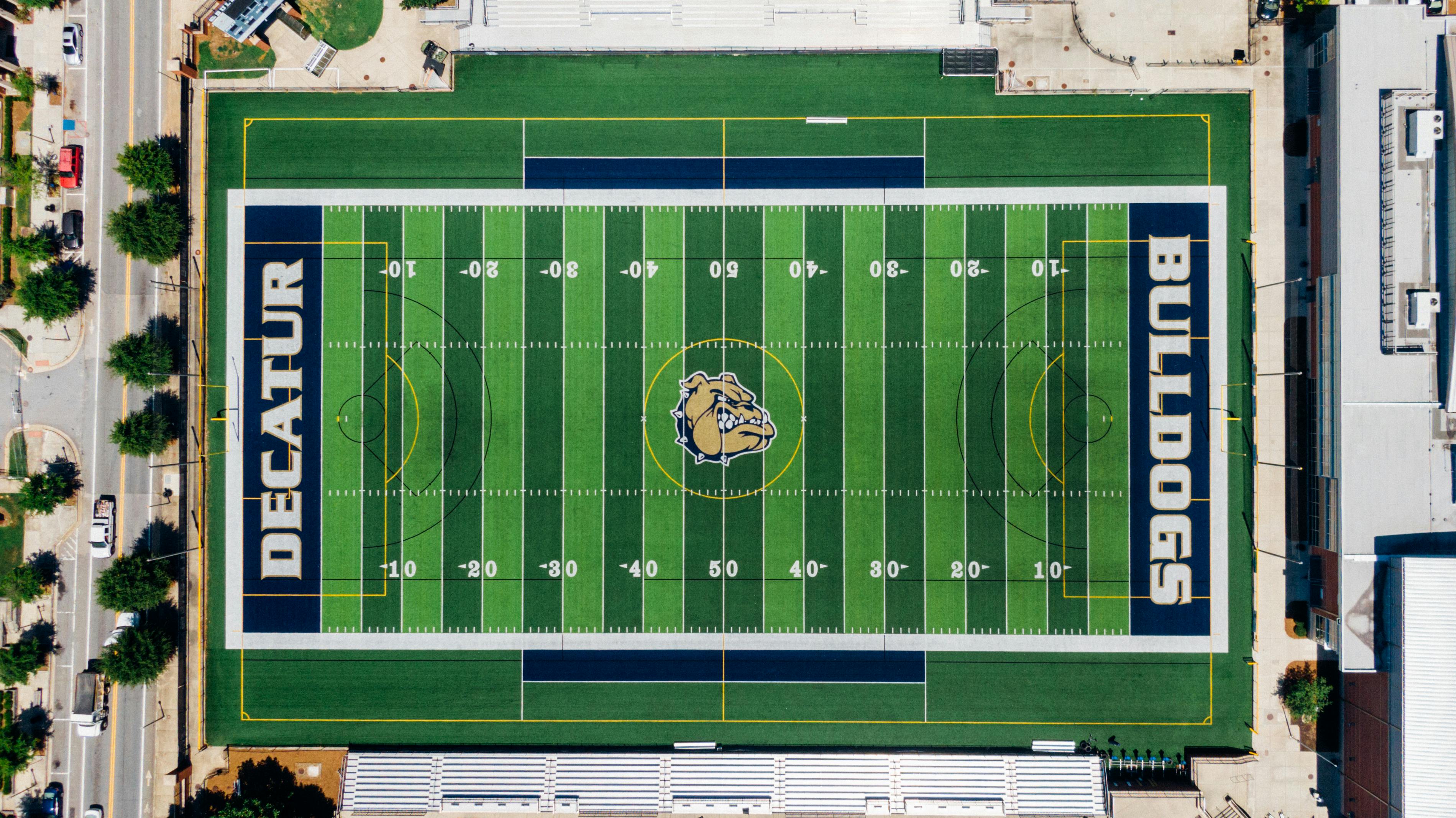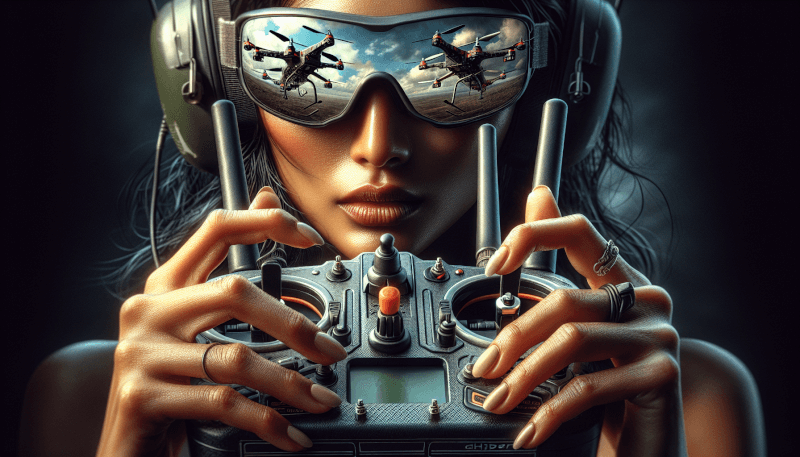Imagine being able to soar through the skies like a bird, taking in breathtaking views and experiencing the world from a whole new perspective. With the Beginner’s Guide to Drone First-Person View (FPV) Flying, you can do just that. This comprehensive guide will walk you through the basics of FPV flying, from choosing the right equipment to mastering the controls. Whether you’re a beginner looking to take your drone flying skills to new heights or a seasoned pilot eager to explore the exhilarating world of FPV, this guide has everything you need to get started. So buckle up and get ready for an adventure unlike any other!

Choosing the Right Drone
When it comes to choosing the right drone for FPV flying, there are several factors to consider. Firstly, you need to think about your experience level. If you’re a beginner, it’s advisable to start with a quadcopter that is easy to fly and has stable flight characteristics. On the other hand, if you’re more experienced, you might opt for a more advanced model that offers greater speed and agility.
Another important factor to consider is your budget. Drones come in a wide range of prices, so it’s important to set a budget that works for you. Remember to consider not only the cost of the drone itself but also the additional equipment required for FPV flying.
Additionally, you should consider the flight time and battery life of the drone. FPV flying can be quite exhilarating, so it’s crucial to choose a drone that offers a decent flight time. Keep in mind that the battery life will vary depending on the drone’s specifications and the weight of the additional equipment you’ll be carrying.
Lastly, don’t forget to consider the availability of spare parts and customer support. Accidents happen, and it’s important to choose a drone that has readily available spare parts and reliable customer support to assist you in case anything goes wrong.
Types of Drones for FPV Flying
There are several types of drones available for FPV flying, each with its own strengths and limitations. The most common type is the quadcopter, which features four propellers and is known for its stability and maneuverability. Quadcopters are a great choice for beginners as they offer a good balance between stability and agility.
For those seeking more speed and thrill, racing drones are the way to go. Racing drones are designed for high-speed flying and are equipped with powerful motors that allow for swift maneuvers. However, due to their high speed and agility, racing drones are better suited for experienced pilots.
Another type of drone commonly used for FPV flying is the fixed-wing drone. Unlike quadcopters and racing drones, fixed-wing drones have a different aerodynamic design resembling that of an airplane. These drones offer longer flight times and are better suited for long-range exploration rather than acrobatic flying.
Ultimately, the choice of drone will depend on your personal preferences and the type of flying experience you are seeking. It’s a good idea to research and read reviews to find the drone that best suits your needs.
Getting Started with FPV Flying
Before you dive into FPV flying, it’s important to understand what First-Person View (FPV) is all about. FPV flying allows you to see the drone’s perspective in real-time through a video feed transmitted from an onboard camera. This immersive experience gives you the feeling of being in the pilot’s seat.
To get started with FPV flying, you’ll need some basic equipment. Firstly, you’ll need a drone equipped with an FPV camera and a video transmitter. The FPV camera captures the aerial footage, while the video transmitter sends the live video feed to your goggles or monitor.
Speaking of goggles, you’ll need a pair of FPV goggles or a monitor to view the live video feed. FPV goggles provide a more immersive experience, making you feel like you’re right in the cockpit. Monitors, on the other hand, offer a larger display but may not provide the same level of immersion.
Lastly, don’t forget to invest in a good quality radio transmitter and receiver. These are used to control the drone’s flight and make precise movements. It’s important to choose a transmitter that is comfortable to hold and has a good range.
With these basic equipment requirements, you’ll be ready to start your FPV flying journey.
Building Your FPV Drone
Building your own FPV drone can be a rewarding experience and allows you to customize your drone according to your preferences. To get started, you’ll need a few key parts.
The first component you’ll need is a frame. The frame serves as the structural backbone of the drone and holds all the other components together. Make sure to choose a frame that is durable and lightweight for optimal performance.
Next, you’ll need motors and propellers. The motors provide power to the propellers, which generate the thrust needed for flight. It’s important to choose motors that are compatible with your frame and offer the right level of power for your desired flight characteristics.
You’ll also need an electronic speed controller (ESC), which controls the speed of the motors. The ESCs are connected to the flight controller, which is the brain of the drone. The flight controller processes the signals from the transmitter and translates them into movements of the drone.
Other components you’ll need include a battery, a power distribution board, and a receiver. The battery provides the necessary power to the drone, while the power distribution board ensures that power is distributed evenly to all the components. The receiver, as the name suggests, receives signals from the radio transmitter and sends them to the flight controller.
Once you have gathered all the necessary parts, it’s time to assemble your drone. Follow the manufacturer’s instructions and take your time to ensure that everything is connected properly. If you’re not confident in your abilities, it’s a good idea to seek guidance from experienced drone builders or watch tutorial videos.
Building your own FPV drone can be a fun and educational process, and it allows you to have a deep understanding of how the drone works.

Setting Up FPV System
Setting up the FPV system is an essential step in FPV flying. The FPV system consists of the FPV camera, video transmitter, and receiver, as well as the goggles or monitor that you’ll be using to view the live video feed.
The FPV camera is mounted on the front of the drone and captures the aerial footage. It’s important to choose a camera with a high-resolution sensor for clear and detailed video. Additionally, consider the camera’s field of view (FOV) as it affects the perspective you’ll have while flying.
The video transmitter is responsible for transmitting the live video feed from the camera to your goggles or monitor. Make sure to choose a transmitter that has a good range and offers stable transmission. Higher power transmitters generally have a longer range, but keep in mind that higher power transmitters may require a radio frequency (RF) license in some countries.
To receive the video feed, you’ll need a video receiver. The receiver is connected to your goggles or monitor and picks up the signals transmitted by the video transmitter. Make sure to choose a receiver that is compatible with your goggles or monitor.
Speaking of goggles or monitors, it’s important to choose the option that suits your preferences. FPV goggles provide a more immersive experience as they completely block out external light, making you feel like you’re in the cockpit of the drone. Monitors, on the other hand, offer a larger display but may not provide the same level of immersion.
Once you have all the components, follow the manufacturer’s instructions to set up the FPV system. Make sure to properly connect all the cables and ensure that the video feed is clear and stable.
Learn the FPV Controls
Before taking your drone for its first flight, it’s important to familiarize yourself with the FPV controls. These controls allow you to maneuver the drone and perform various flight maneuvers.
The remote controller, also known as the transmitter, is used to control the drone’s flight. It has several functions that you need to understand before taking to the skies. Familiarize yourself with the different switches, buttons, and sticks on the transmitter. Take the time to read the manual and understand the purpose of each control.
The four primary controls in FPV flying are throttle, pitch, roll, and yaw. Throttle controls the altitude of the drone, pitch controls the forward and backward movement, roll controls the side-to-side movement, and yaw controls the rotation of the drone. Spend some time practicing these controls to become comfortable with the movements they produce.
Additionally, it’s important to understand the concepts of trim and expo. Trim allows you to fine-tune the drone’s stability by adjusting the control inputs. Expo, on the other hand, affects the sensitivity of the controls. Setting a higher expo value can make the controls less sensitive around the center, providing smoother inputs.
Take the time to practice with these controls in a safe and open area before attempting more advanced maneuvers. Understanding and mastering the controls is crucial for a smooth and enjoyable FPV flying experience.

Safety Measures
Safety should always be a top priority when engaging in FPV flying. Here are some important safety measures to keep in mind.
Firstly, choose an appropriate flying location. Look for open areas with few obstacles such as trees, buildings, or power lines. Avoid flying near airports or other restricted airspace to ensure the safety of yourself and others. Additionally, be mindful of local regulations and any restrictions on drone flying in your area.
Check the weather conditions before each flight. Strong winds, rain, or low visibility can negatively impact your flight experience and potentially cause accidents. It’s best to fly on calm days with good visibility.
Taking care of your batteries is crucial for safe and successful flights. Always inspect your batteries before each flight for any signs of damage or swelling. Follow the manufacturer’s guidelines for charging and storage, and never leave your batteries unattended while charging.
Pre-flight Checklist
Before taking off, it’s important to go through a pre-flight checklist to ensure that everything is in working order. Here are some key items to check:
- Check the drone and equipment for any signs of damage or loose parts. Pay special attention to the motors, propellers, and antennas.
- Calibrate the sensors on the drone according to the manufacturer’s instructions. This ensures that the drone’s flight behavior is accurate and stable.
- Verify the video transmission from the FPV camera to your goggles or monitor. Make sure the video feed is clear and stable, and that you have a good signal reception.
Going through a pre-flight checklist helps you avoid potential problems and ensures a safe and smooth flight.

Mastering FPV Flying Techniques
Once you have the basics down, it’s time to master some FPV flying techniques. Start with controlled flights, practicing basic maneuvers such as flying in a straight line, making smooth turns, and maintaining a consistent altitude. This will help you build confidence and improve your control over the drone.
As you become more comfortable with controlled flights, you can start learning acrobatic maneuvers. These maneuvers include flips, rolls, and loops, which add excitement and challenge to your FPV flying experience. Start with small and slow maneuvers and gradually increase the difficulty as you gain confidence and skill.
Navigating through obstacles is another important skill to develop. Set up a course with various obstacles such as hoops, flags, or trees, and practice flying through them while maintaining control and avoiding collisions. This will sharpen your reflexes and improve your ability to maneuver in tight spaces.
Remember to always practice in safe and open areas away from people and property. Flying responsibly and being aware of your surroundings is essential for a safe and enjoyable FPV flying experience.
Troubleshooting Common Issues
Even experienced FPV pilots encounter problems from time to time. Here are some common issues you may encounter and how to troubleshoot them:
Video signal interference can cause a poor video feed or loss of signal. Make sure there are no sources of interference nearby, such as Wi-Fi routers or other electronic devices. Additionally, ensure that your antennas are properly positioned and not obstructed by the drone’s frame or other components.
Drone range limitations can be frustrating, especially when you lose control of your drone due to signal loss. To extend the range of your drone, consider upgrading to a higher power video transmitter or using an external antenna. Additionally, always fly within line of sight and avoid flying in areas with excessive signal interference.
Flight controller problems can cause erratic flight behavior or loss of control. If you’re experiencing issues with your flight controller, first make sure that all the connections are secure and properly soldered. If the problem persists, it may be necessary to update the firmware or replace the flight controller.
If you’re unable to troubleshoot the issue on your own, don’t hesitate to reach out to online forums or local drone communities for assistance. There are often experienced pilots who are willing to offer guidance and support.

Joining a Drone Community
Joining a drone community is a great way to connect with fellow FPV enthusiasts, learn from their experiences, and participate in events. Here are a few ways to get involved:
Online forums and groups provide a platform for pilots to discuss various topics related to FPV flying. You can ask questions, share your experiences, and find valuable resources. Be respectful and follow the rules of the community, and you’ll find a wealth of knowledge and support.
Local drone racing clubs often hold regular meetups and races. These clubs provide an opportunity to meet other pilots in person, exchange tips and tricks, and take part in friendly competitions. Joining a local club can be a great way to enhance your skills and create lasting friendships.
Attending FPV events, such as races or exhibitions, can be an exciting experience. These events bring together pilots from all skill levels and offer a chance to see the latest technology, watch thrilling races, and learn from experts. Keep an eye out for local or regional FPV events and make plans to attend.
Being part of a drone community not only enhances your FPV flying experience but also allows you to contribute to the community by sharing your knowledge and experiences with others.
In conclusion, FPV flying is an exhilarating hobby that offers a unique perspective and a thrilling experience. By choosing the right drone, understanding the FPV system, mastering the controls, and taking safety measures, you can embark on an exciting journey of FPV flying. Remember to continuously practice and learn from experienced pilots, and don’t forget to enjoy the breathtaking views and adrenaline rush that FPV flying has to offer. Happy flying!


